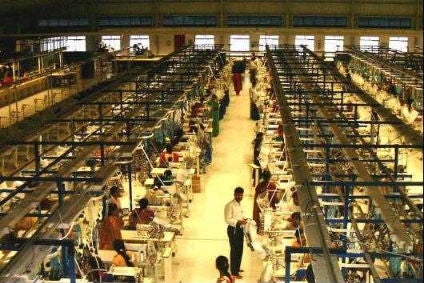
Subdued demand in key markets due to the rapid spread of the Covid-19 virus is weighing on Indian apparel and cotton exporters, with concerns over working capital and liquidity as orders are postponed.
According to credit ratings agency ICRA, the industry is facing increased challenges that include cost-side pressures resulting from disruptions to raw material supplies such as man-made fibres/yarns, dyes and chemicals and trims/accessories such as zippers, buttons and needles from China.
Demand from the EU remains weak as countries go into lockdown, stores shutter, and many customers fall into bankruptcy.
Recent trends in US apparel imports have also been discouraging, with the volume falling 12% year-on-year in the third-quarter of FY2020 and an overall decline of around 0.3% year-on-year in the 9 month period. This follows a 17% year-on-year decline in domestic retail sales of clothing and clothing accessories (in value terms) in the US in the third quarter and 9-months respectively.
Besides affecting order flows, it could potentially result in renegotiation of contracts as well as delayed payments for exporters.
Other challenges include intensifying competition from competitor countries with free trade agreements – such as Bangladesh duty-free access to EU markets under the Everything but Arms scheme, and the EU-Vietnam Free Trade Agreement edging closer.
And among domestic headwinds are continued uncertainty on the structure of export incentives, as well as delays in clearing previous dues and input credit refunds.
Recent policy changes have included the withdrawal of the Merchandise Export from India Scheme (MEIS) benefit, incurring a write-back on export incentives already booked for orders shipped during the current fiscal year.
A one-time ad hoc incentive of up to 1% “would only partially compensate for the loss and some impact on profitability is still likely,” the ICRA says.
Details of the new export incentive scheme – Remission of Duties or Taxes on Export Products (RoDTEP) – are yet to be announced. It will reimburse taxes/duties/levies incurred in the manufacture and distribution of exported products but which are not being refunded under any other mechanism.
“With peer nations enjoying duty-free access in some of the key markets, export incentives have played a crucial role in supporting competitiveness of domestic apparel exporters in the international markets,” adds ICRA.
On the upside, the US-China trade war coupled with the coronavirus outbreak are likely to encourage major international buyers to diversify their sourcing bases, to reduce dependence on China, which accounts for over 30% of global apparel trade.
India is seen as one of the key countries that stand to benefit from this shift, along with Bangladesh, Vietnam and Turkey.
Having said that, the shift in the sourcing base is likely to be gradual as there are exit barriers for large buyers in terms of compliance requirements and establishing a reliable supplier base for large quantities.
“Apparel exporters from India, particularly the larger ones, are well positioned to benefit from the market opportunity in the medium term,” says Jayanta Roy, senior vice-president and group head, corporate sector ratings, ICRA.
“Nevertheless, it would require companies to scale up their operations, maintain strict delivery schedules and meet stringent compliance requirements of buyers in a short span of time, to fill the supply-side gap left by the Chinese exporters.”
The domestic cotton spinning industry has also been hurt by the slowdown in China production earlier this year. Around 30% of the cotton yarn produced in India is exported, and China accounts for nearly one-third of these exports. The outbreak of the coronavirus in China and the subsequent shutdown of production units trickled down to lower demand for yarn.
Separately the Apparel Export Promotion Council (AEPC) is urging the Reserve Bank of India (RBI) to support the sector during the crisis.



